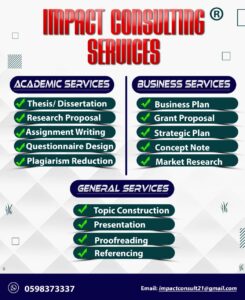Tips for Writing a Masters Thesis Introduction

Overview of Tips for Writing a Masters Thesis introduction
Tips for Writing a Masters Thesis Introduction: Mastering the art of crafting a compelling introduction is crucial, not only in academic contexts but across various forms of communication. As the initial point of engagement with your audience, the introduction’s effectiveness can significantly impact the reception of your work. The following are key strategies designed to assist in creating an introduction that is engaging, clear, and easily understandable.
Tips for Engaging the Reader from the Start
- Hook the Reader: Begin with something intriguing – a surprising fact, a provocative question, or a compelling anecdote. This immediately captures the reader’s interest and encourages them to read further.
- Set the Context: Provide enough background to situate your topic. This could include historical context, current trends, or a brief overview of relevant theories or debates.
- State Your Purpose: Clearly articulate the purpose of your piece. What can the reader expect to learn or understand by the end of your work?
- Use an Active Voice: Active voice makes your writing more direct and dynamic. It engages readers more effectively than the passive voice.
- Be Concise: Avoid unnecessary details in the introduction. Stick to the essentials to keep the reader’s attention focused.
The Importance of Clarity and Conciseness (Tips for Writing a Masters Thesis Introduction)
- Avoid Jargon: Unless you’re writing for a specialized audience, minimize technical language. If you must use it, provide clear definitions.
- Be Precise: Ambiguity can confuse readers. Ensure that every sentence conveys a clear and specific point.
- Keep it Short and Sweet: Long, rambling introductions can lose readers. Aim to be as concise as possible without sacrificing clarity.
- Structure Carefully: Organize your introduction logically. It should naturally lead the reader from your opening hook to your thesis or main argument.
Balancing Technical Detail with Accessibility (Tips for Writing a Masters Thesis Introduction)
- Know Your Audience: Tailor the level of technical detail to your audience. Experts may appreciate more complexity, while a general audience might need simpler explanations.
- Explain Technical Terms: If technical terms are essential, define them clearly. Use analogies or examples to make complex ideas more relatable.
- Link Back to the Big Picture: Show how technical details fit into the larger context. Why are these details important for the reader to understand the broader topic?
- Use Clear, Descriptive Language: Even when discussing technical details, clear and descriptive language can make your writing more accessible.
- Employ Visuals if Appropriate: Diagrams, charts, or images can help clarify complex ideas, making them more accessible to a broader audience.
Writing a compelling introduction is about engaging your reader, being clear and concise, and balancing technical detail with accessibility. By employing these strategies, you can craft introductions that not only capture your readers’ attention but also effectively set the stage for the rest of your work. Whether you’re writing a blog post, an academic paper, or any other form of writing, a strong introduction is key to drawing your audience in and making your message heard.
Common Mistakes to Avoid in Writing Thesis Introductions
 Crafting an introduction for a thesis can be a nuanced task, and there are common pitfalls that many writers encounter. Being aware of these can help in creating a more effective and impactful opening to your research. Here are some key mistakes to avoid:
Crafting an introduction for a thesis can be a nuanced task, and there are common pitfalls that many writers encounter. Being aware of these can help in creating a more effective and impactful opening to your research. Here are some key mistakes to avoid:
Overly Broad or Vague Introductions
- Generalizations: Starting with overly broad statements can dilute the focus of your research. For instance, beginning a thesis on marine pollution with a generic statement like “Pollution affects the environment” is too broad. Instead, directly target the specific aspect of pollution relevant to your study.
- Lack of Specificity: A vague introduction fails to give readers a clear understanding of what the thesis will cover. Ensure that your introduction explicitly states the research topic, objectives, and the significance of the study.
- Avoiding the Thesis Statement: The introduction must include a clear thesis statement that outlines the main argument or focus of the research. Omitting this leaves readers guessing about the direction and purpose of your study.
Diving into Too Much Detail Too Early
- Overloading Information: Bombarding the reader with too much detail in the introduction can be overwhelming. Keep the introduction focused on what is necessary to set up the research problem and its context.
- Methodological Details: While it’s important to mention the research approach, detailed methodological discussions belong in later sections. The introduction should focus more on ‘what’ and ‘why’ rather than ‘how’.
- Extensive Literature Review: While some reference to existing research is necessary, save the comprehensive literature review for its designated section. The introduction should only highlight key studies that directly inform your research problem.
Losing Focus on the Main Research Question (Tips for Writing Masters Thesis Introduction)
- Irrelevant Content: Everything in your introduction should tie back to your main research question. Avoid including information, no matter how interesting, that does not contribute to setting up your research problem.
- Shifting Topics: Maintain a consistent focus throughout the introduction. Shifting between different topics can confuse readers and detract from the cohesiveness of your argument.
- Not Aligning with Objectives: Ensure that the introduction aligns with the objectives and scope of your research. If your introduction sets up expectations that the rest of the thesis does not fulfill, it can mislead and frustrate readers.
A well-written introduction is crucial for a successful thesis. It requires a balance of providing enough context without being overly broad or detailed, and most importantly, it should maintain a clear focus on the research question. By avoiding these common mistakes, you can craft an introduction that effectively sets the stage for your research, engaging and guiding your readers through the rest of your thesis.
Linking the Introduction to the Rest of the Thesis (Tips for Writing Masters Thesis Introduction)

Creating a seamless connection between the introduction and the subsequent chapters of a thesis is crucial for maintaining coherence and flow in academic writing. The introduction not only sets the stage but also provides a roadmap for the entire thesis. Here’s how to ensure effective linkage:
Ensuring a Smooth Transition to Subsequent Chapters
- Preview Major Points: In the introduction, briefly preview the major points or findings that will be discussed in detail in the subsequent chapters. This acts as a guide for the reader, letting them know what to expect and how the chapters contribute to the overall argument or research objectives.
- Logical Flow: The transition from the introduction to the body of the thesis should be logical and natural. The end of the introduction should lead directly into the subject matter of the first chapter. If the introduction ends with a statement about the importance of addressing climate change impacts on agriculture, for instance, the next chapter should naturally pick up on this topic.
- Consistency in Tone and Style: Maintaining a consistent tone and style throughout the thesis helps in creating a smooth transition. The way you establish your voice in the introduction should set the tone for the rest of the work.
- Link Back to Research Questions: As each chapter unfolds, continually link back to the research questions or objectives stated in the introduction. This reminds the reader of the central focus and purpose of your research.
How the Introduction Sets the Framework for the Entire Thesis
- Establishing the Thesis Structure: The introduction should lay out the structure of the thesis. Inform the reader about the number of chapters, their individual focus, and how they contribute to addressing the research problem.
- Setting the Context: The introduction provides the necessary background and context for the entire thesis. It ensures that the reader has the requisite understanding to grasp the detailed arguments or data presented in later chapters.
- Defining Key Terms and Concepts: Any critical terms or concepts introduced in the introduction should be consistently used throughout the thesis. This helps in maintaining clarity and coherence.
- Presenting the Thesis Statement: The thesis statement in the introduction outlines the main argument or position that the entire thesis will support. Subsequent chapters should consistently align with and support this statement.
- Building Expectations: The introduction sets expectations regarding the depth and scope of research, the analytical approach, and the type of findings. The body of the thesis should then fulfill these expectations.
The introduction of a thesis is not an isolated component; rather, it’s intricately linked to the entire document. It acts as a foundation upon which the rest of the thesis is built. By ensuring a smooth transition into subsequent chapters and setting a clear framework for the thesis, the introduction plays a pivotal role in guiding the reader through the complexities of your research, maintaining coherence and integrity throughout the work.
Revising and Refining the Introduction
The introduction of a thesis is not just the starting point of your writing process but also a critical component that often requires revisiting and refining after completing the rest of the thesis. This iterative process is key to ensuring that your introduction accurately reflects and effectively sets the stage for your entire research.
The Importance of Revisiting the Introduction After Completing the Thesis
- Alignment with the Thesis Content: Often, the direction or emphasis of your research can evolve during the writing process. Revisiting the introduction ensures that it accurately reflects the final content and conclusions of your thesis.
- Cohesion and Consistency: As you develop your arguments or findings in the body of the thesis, it’s crucial to ensure that the introduction is consistent with these elements. The thesis statement, research questions, and objectives outlined in the introduction should be in complete harmony with the rest of the document.
- Clarity and Precision: The process of writing and researching can clarify your thoughts and sharpen your focus. Re-examining the introduction with a fresh perspective can lead to improvements in clarity and precision, making your opening statements more impactful.
- Updated Context: The introduction includes background context which, upon completion of your thesis, you might find needs updating or tweaking to better align with your findings.
Seeking Feedback and Making Necessary Adjustments
- Gathering External Perspectives: Feedback from advisors, peers, or mentors is invaluable. Others can provide insights into areas where the introduction may be lacking in clarity, focus, or relevance.
- Incorporating Constructive Criticism: Use the feedback to make adjustments. This might involve clarifying the research problem, refining the thesis statement, or better aligning the introduction with the overall structure and arguments of your thesis.
- Ensuring a Strong Opening: The introduction is your first impression. Based on feedback, you might need to enhance the opening to ensure it effectively engages your audience from the start.
- Checking for Redundancies and Irrelevancies: Ensure that every part of the introduction serves a purpose and contributes to presenting the research problem and its significance. Remove any redundancies or irrelevant information that may have become apparent after completing the thesis.
- Final Proofreading and Editing: The final step in revising your introduction is a thorough proofreading and editing session. This is not just about correcting grammatical errors but also about improving sentence structure, ensuring smooth transitions, and enhancing overall readability.
Revising and refining the introduction of your thesis is a crucial step in the writing process. It’s not just a one-time task at the beginning of your writing journey but a continuous process of alignment and improvement that extends to the very end. This ensures that your introduction accurately sets the stage for your research and resonates with the depth and insights of your completed work.
Conclusion
Recap of Key Points about Writing a Master’s Thesis Introduction
The introduction of a master’s thesis is more than just a preliminary chapter; it is a crucial component that frames your entire research. It sets the tone, establishes the context, and guides the reader through your academic journey. Let’s recap the key points for writing an effective thesis introduction:
- Begin with a Clear Purpose: The introduction must clearly outline the purpose and significance of your research, setting the stage for the reader.
- Engage with a Strong Opening: Start with an engaging hook that captures the reader’s interest, whether it’s a startling statistic, an intriguing question, or an insightful quote.
- Provide a Comprehensive Background: Offer enough background information to give context to your research, but avoid overloading the reader with unnecessary details.
- Articulate the Research Problem: Clearly define the problem your thesis addresses. This problem statement should be specific, focused, and well-articulated.
- Outline the Scope and Limitations: Clearly delineate what your research will cover and acknowledge its limitations, setting realistic expectations for the reader.
- Ensure Cohesion and Consistency: The introduction should flow seamlessly into the rest of the thesis, maintaining consistency in tone and content.
- Revisit and Refine: After completing the thesis, return to the introduction to ensure it aligns with the rest of your work. Make necessary revisions for clarity and impact.
Encouragement to View the Introduction as an Integral Part of the Thesis Journey
The introduction is not merely an opening chapter, but an integral part of the thesis journey. It is where you invite the reader into your research world, offering them a roadmap of what to expect. As such, it deserves the same level of care, research, and refinement as the rest of your thesis. The effort you put into crafting a compelling introduction pays off by engaging your readers and setting a solid foundation for your research arguments and findings.
Additional Resources (Tips for Writing Masters Thesis Introduction)
For further guidance and inspiration in writing your master’s thesis introduction, here are some additional resources:
- Books on Academic Writing: Books like “Writing Your Dissertation in Fifteen Minutes a Day” by Joan Bolker and “How to Write a Master’s Thesis” by Yvonne N. Bui provide detailed insights into academic writing.
- University Writing Centers: Many universities have writing centers that offer resources and personal assistance. Check your institution’s website for guides specific to thesis writing.
- Online Databases: JSTOR, Google Scholar, and your university’s library database are excellent sources for finding examples of effective thesis introductions in your field.
- Academic Journals: Browse through academic journals in your field for examples of research introductions. Pay attention to how scholars introduce and frame their research.
- Writing Workshops and Seminars: Participating in academic writing workshops and seminars can provide practical tips and peer feedback.
Remember, the introduction is your first opportunity to make an impression and set the tone for your thesis. Invest time in making it informative, engaging, and reflective of the quality and depth of your research. The journey of writing a master’s thesis is both challenging and rewarding, and a well-crafted introduction is a significant step towards a successful thesis.

People also read:
Mastering the Writing of Master’s Thesis Introduction
Graduate Thesis Writing and Strategic Time Management
Post-Study Work Visa for International Students in Australia 2024
Study in Canada 2024/2025: A Detailed Guide
UK Visa Application for International Students in 2024/2025




